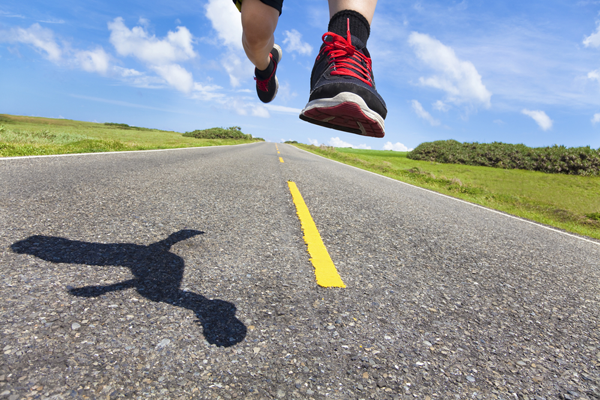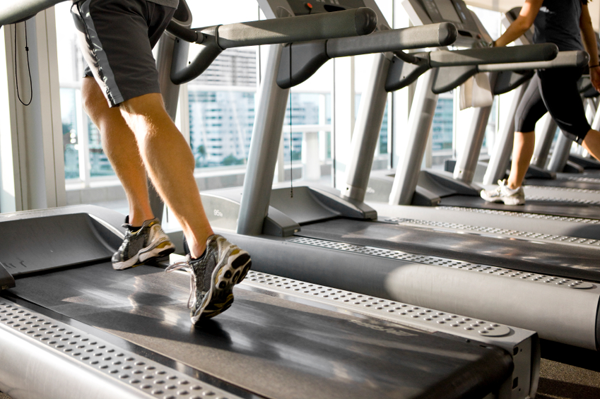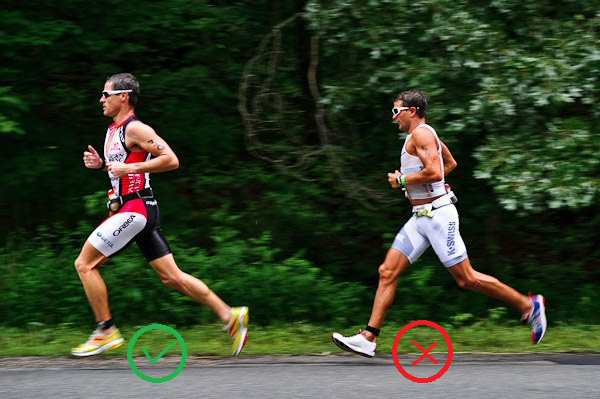When you first start to run, or come back from an extended period of inactivity, it can be hard to tell where to begin. You may not know what you’re capable of, how long to run, or how fast. I want to give you some tips to start running the easy way. This process shouldn’t be frustrating. You’ll get excited seeing how fast you build up endurance. Before you know it you’ll be signing up for running events all over the place.
The first thing that you have to realize is that you’re not just going to get up off the couch and start running miles at a time. You have to be realistic. Think of this process as learning how to walk when you were a baby.
As an infant you go from laying on your back to crawling. From crawling you start to get adventurous and wobble around on two feet. Then when you get the hang of it you can start to walk like everyone else. That’s basically the same process when it comes to building endurance.
Picking The Right Shoe
Before you hit the streets you have to have the proper gear. The nice thing about running is that every single person in the world can do it, no matter how rich or poor. You really don’t need anything at all, except clothes. I’m sure your neighbors don’t want to see you running around without clothes on! Remember, running clothes should be loose, not constricting.
The tricky part is finding a pair of running shoes that are comfortable. Recently, barefoot running has become increasingly popular. The concept basically takes you back in time to how people used to run, barefoot.
Minimalistic shoes have been produced to give runners a barefoot feel. Studies suggest that it allows you to run more naturally. There are also traditional running shoes that have thicker soles. Some brand names that usually produce quality shoes are Asics, Brooks, Saucony, and Mizuno.

Finding the right pair of running shoes is important because it will motivate you to actually use them. Place them in a spot where you will see them daily so they can remind you that it’s time for your workout.
Starting Slow
Depending on your current fitness level, for the first day there’s no need to go over a mile or two. If you’re not prepared to jog or run, then walking at a fast pace is perfectly fine.

Your main goal should just be to get a feel for the road and find a path that you like to take. You may want to take your car out first and measure out a course using the distance tracker on the odometer.
Before you start running remember to warm-up really well using dynamic stretches that involve lots of leg and core muscles. Check out the stretching playlist on the SteadyStrength YouTube channel for some ideas.
Running Tempos
Tempos are an efficient way to build up endurance progressively. You do this by going at a high intensity for a set period of time, and alternating with short periods of lower intensity running.
When you first start off, running/jogging for 30 seconds with 1 minute segments of walking may be all you can do. Keep going for the whole course that you set for yourself. Eventually build up to running for 1, 2, then 3 minutes. After a few weeks of building, decrease your rest time to 30 seconds. Soon enough you will not have to take any breaks. You’ll be able to run straight through.
If you do tempo runs outside you will need a stopwatch to track your time. This Omron HR-100C Heart Rate Monitor comes at a high quality and great price if you choose that route. Using a treadmill makes it a little bit easier because all treadmills have features that track your time, distance, and ability to increase and decrease speed.

Avoid Heel Striking
Using correct form is vital to protecting yourself from injury. Here are 6 Ways To Avoid Injuries During Exercise. When you run you want to land on the mid-foot, or ball of your foot, as opposed to the heel. A constant heel strike on the ground creates more pounding on the knees.
As you can see the runner on the left has his head slightly ahead of his feet. His momentum is going forward and he’s landing on the ball of his foot. The runner on the right has his weight shifted back, which is causing his heel to make first contact with the ground.
Another common overuse injury in runners is called plantar fasciitis. It is when the fascia (connective tissue) on the bottom of the foot gets irritated or damaged. Most of the time it causes pain in the heel that can spread through the arch of the foot. If you start feeling these symptoms, take a look at Relief and Recovery From Plantar Fasciitis so you can get back on the road in no time.
I hope this article helps you to start running the easy way. It won’t happen over night, but you can gain endurance quickly if you are progressive about it. That will save you frustration, and possible injury. If you enjoyed this read, please take a minute to share this with your friends on facebook. You can also ask me specific questions about your running habits by contacting me. I’ll respond to you immediately.

 About Adam Pegg
About Adam Pegg



